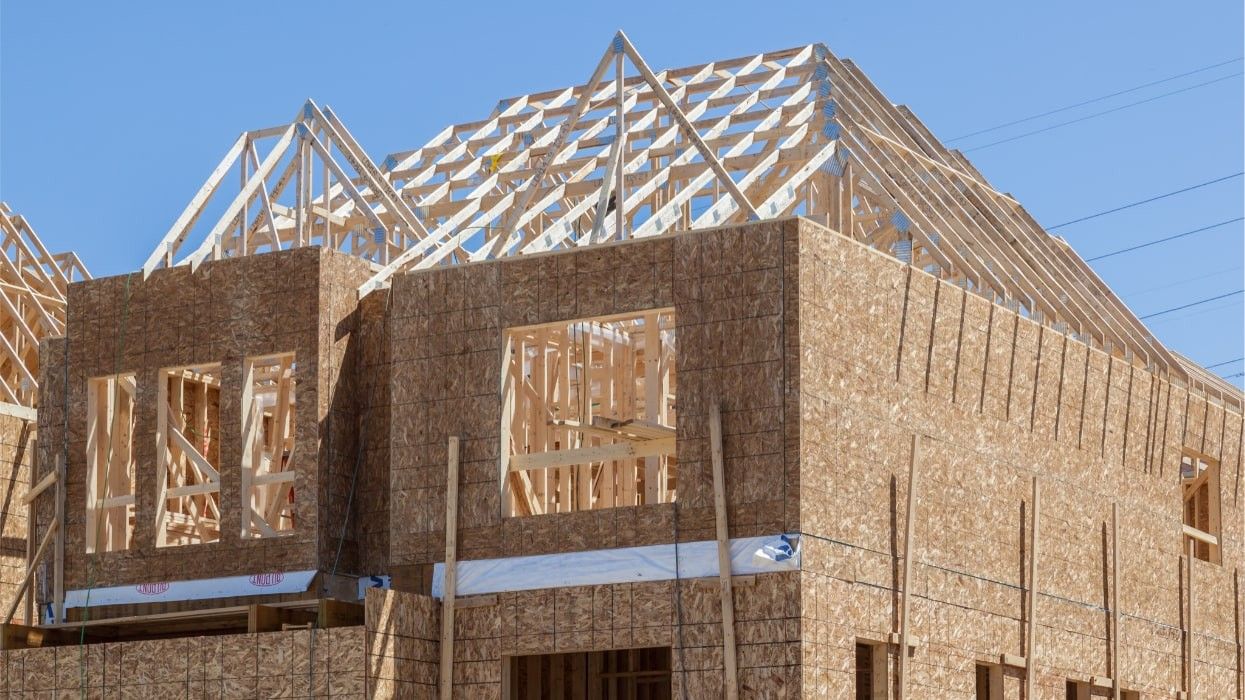To remedy the affordability crisis, Canada needs to build 5.8 million new homes by the end of the decade. But doing so could create nearly 143 megatons of annual greenhouse gas emissions in 2030.
New modelling released by the Task Force for Housing and Climate shows that with weak public policy approaches, Canada’s homebuilding target could generate as much as 142.7 megatons of emissions in 2030.
However, with strong leadership from all levels of government, the task force says that figure could be cut by up to 100 megatons — the equivalent of 34% of Canada’s 2030 greenhouse gas reduction target.
The scenarios create a "stark difference" for Canada’s climate future, said Don Iveson, Co-Chair of the Task Force for Housing and Climate.
"When you stack the findings from these three analyses, the numbers are jaw-dropping," Iveson said. "One hundred megatons a year left in the carbon budget would be one way of looking at it, but most importantly, substantial improvement in efficiency and cost of operations for those buildings."
The modelling, conducted by researchers at Efficiency Canada, the Centre for the Sustainable Built Environment at the University of Toronto, and the PLACE Centre at Smart Prosperity Institute, examined the three largest sources of greenhouse gas emissions associated with the construction of new housing — embodied emissions, land use planning, and energy performance — to determine where improvements can be made.
"There are ways to address housing affordability while also limiting the impacts on climate change," Iveson said. "Those are the solutions our task force is investigating and the kinds of solutions Canadian governments at every level need to be pushing forward."
The greatest opportunity to reduce the climate impact of new housing lies in limiting embodied emissions from construction and supportive infrastructure, such as roads and sewers, by building fewer single-family homes and focusing construction in urban areas where such infrastructure is already in place.
The "worst-case scenario," which the modelling shows would generate 94.2 megatons of annual GHG emissions in 2030, would be if all of Canada’s new 5.8 million homes are single-family detached abodes built in greenfield areas using current construction methods.
However, if new housing is comprised of efficiently designed multi-unit buildings built within existing urban boundaries, only 8 megatons of annual GHG emissions would be created in 2030, a savings of 86.2 megatons per year.
Another benefit of concentrating construction in existing urban areas is a reduction in vehicle emissions. If new housing follows the suburban sprawl pattern of the last decade, annual GHG emissions in 2030 will be 35.6 megatons. But, if Canada’s 5.8 million homes are built near public transit, emissions are cut to 30.8 megatons as a result of homeowners driving less.
When it comes to the homes themselves, improvements to energy efficiency, such as electric and water-powered heating systems, could save 8.7 megatons of GHG emissions per year.
According to the modelling, if provinces continue with a "limited" implementation of the 2020 National Building Code, the energy performance of 5.8 million new homes will result in an increase of 12.9 megatons of annual GHG emissions in 2030.
In 2020, the federal government introduced energy performance tiers to the building code, which provide a framework for achieving higher levels of energy efficiency in homebuilding.
But, if provinces move to Tier 3 of the National Building Code and Tier 2 of the National Energy Code for Buildings in 2025, progress towards the upper tiers’ net-zero strategy in 2030, and adopt the electrification of all new buildings by 2025, annual emissions are up by just 4.2 megatons.
"The implications of this work is that immediate strong policy leadership by governments could dramatically reduce the greenhouse gas emissions associated with those millions of new homes," Iveson said.
"The inverse is that every year Canada delays moving towards stronger policy on housing and climate, we risk locking in higher energy costs for those homeowners and renters, and higher emissions for our country."





















